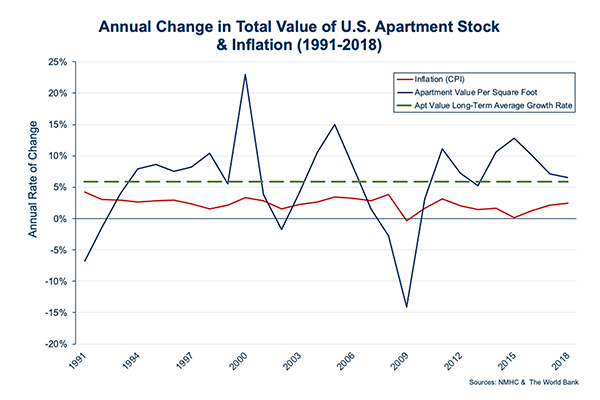Commercial Real Estate & Hedging Against Inflation
When prices for goods and services rise, the yield on cash and fixed income investments erodes, known as inflation risk. Over the past decade, many nations, including the U.S., have enjoyed a low inflation environment, leaving inflation risk unattended. Now, as the global economy rebounds from the pandemic-induced recession, prices are beginning to rise rapidly; the U.S. Labor Department’s Consumer Price Index climbed 4.2 percent over the last year. Meanwhile, economists continue to revise their inflation expectations upward. Respondents to Bloomberg’s economist survey now expect inflation to rise well-above 3 percent from Q2 2021 through the end of the year. So, with inflation on the rise, how can investors mitigate inflation risk within their portfolios? Commercial real estate investment.
Subscribe now for more CONTI insights

Commercial real estate provides a unique inflation hedge for the well-diversified investor for two primary reasons. First, the costs of constructing new structures move directionally with inflation. As prices increase for major inputs like wood, copper, and labor, the values of newly constructed real estate assets increase as well. Value increases for newly constructed assets also result in price growth for older assets; a rising tide of prices lifts all boats.
The second reason commercial real estate serves as an exceptional hedge against inflation is due to an operational characteristic of the U.S. commercial real estate market: fixed-term leases. Across all real estate classes, lease structures include set expiration periods where landlords can renegotiate rental rates with tenants. Landlords also hold the right to remove tenants who disagree with increasing rates. So, when prices rise, landlords can easily increase rental rates to keep pace with even the most troublesome inflation.
While fixed-term lease structures are common across all classes, multifamily real estate provides one of the best hedges against inflation. Multifamily leases are typically structured with six to twelve-month terms. These relatively short-term leases allow multifamily investors to capture rapid rent increases when confronted with high inflation. The benefits to multifamily investment can be seen in the historical price growth of assets: During the past three decades, the average annual growth rate for multifamily asset values has more than doubled the annual rate of inflation in the U.S. Fixed-term leases along with price responsiveness relative to input costs allow commercial real estate investors an unparalleled tool to combat inflation risk without compromising yield.
In today’s economic environment, inflation is a byproduct of post-pandemic economic recovery. While some might view rising consumer prices as a negative, it can also have some positive effects – particularly in the realm of commercial real estate. Shorter lease terms allow landlords to capitalize on changes to the market and rising prices leads to rising values, boosting appreciation and income potential. For the savvy investor looking to hedge their portfolio against inflation risk, commercial real estate investment, especially multifamily housing, offers an ability to maximize return potential with a resilient product.




